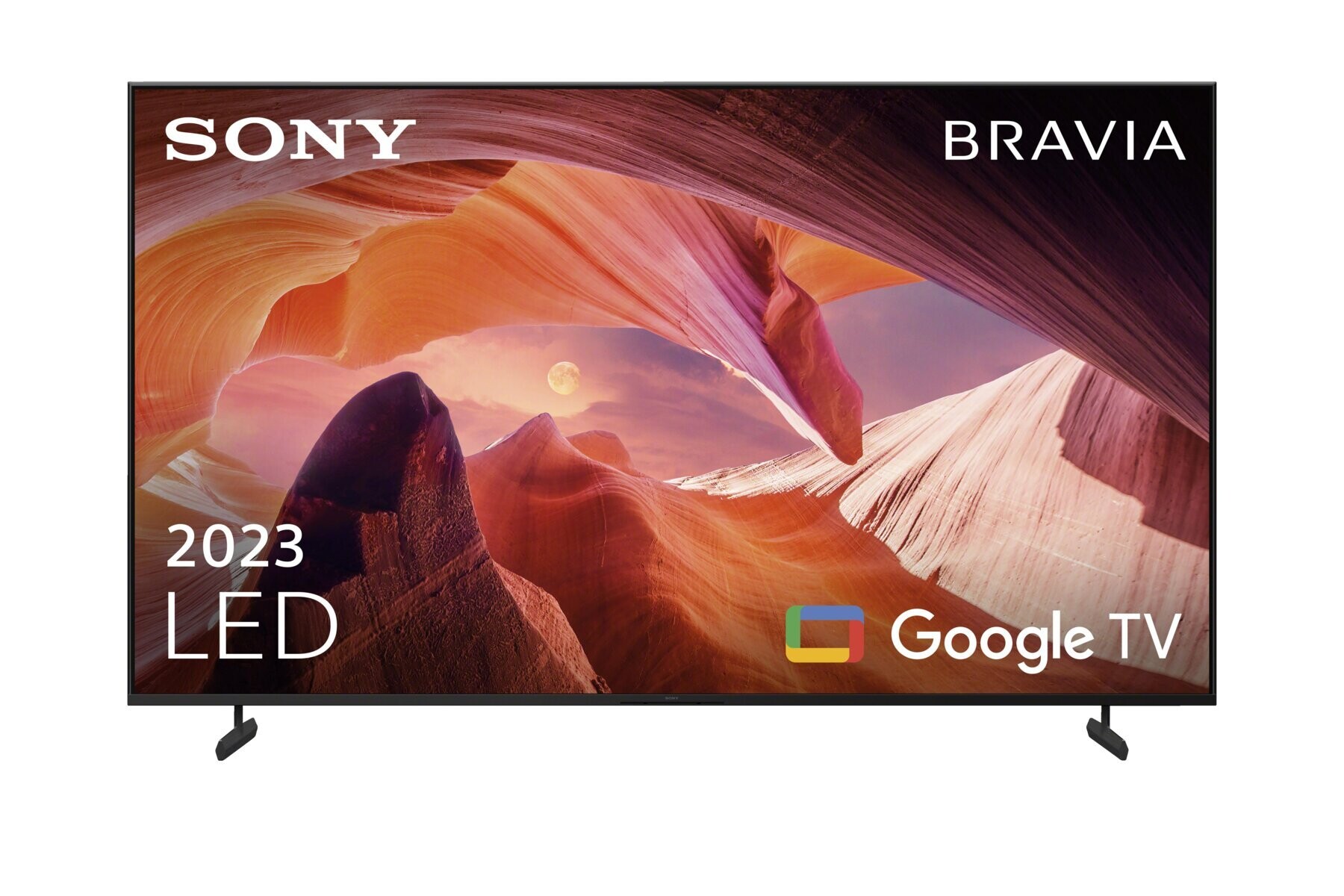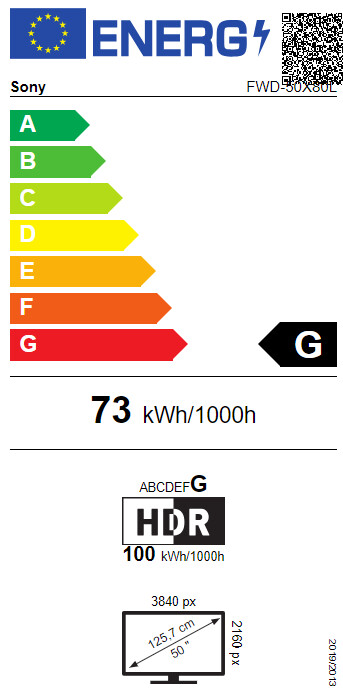























£1,095.48*
- Resolution 3840 x 2160 4K UHD
- Panel type LCD
- Aspect Ratio 16:9



Product information
Your daily entertainment in a new design. That's the BRAVIA TV X80L from Sony.
With our ultra-wide Triluminos Pro colour gamut, you'll see shades and hues on the X80L that you won't see on other displays. Our X1 processor is the power behind these bright, colourful images. It analyses content in real time and optimises everything displayed on the screen. The sound is delivered by our unique X-Balanced Speaker Unit for a breathtaking, high-quality sound experience with powerful bass. With its minimalist and timeless design and the discreet, slim flush-surface frame, which ensures that you can concentrate fully on the picture, the TV fits into any interior.
With this Google TV, you have access to over 700,000 films and TV series and everything is organised by theme and genre to reflect your personal interests. With our new dedicated gaming menu, you can quickly optimise your gaming performance. It offers VRR, motion blur reduction, a black equaliser, a crosshair function (in six different designs) and a custom screen that allows you to zoom in to all corners of your view when you want to see more detail in a game and zoom out to focus your eyes on a target.
Experience the following highlights:
- Colours that bring the real world to your home with TRILUMINOS PRO
- 4K HDR Processor X1
- Great sound with more bass
- Automatic HDR tone mappingIntegrated Google TV
Colours that bring the real world to your home with TRILUMINOS PRO
Thanks to our 4K HDR Processor X1™ and wide colour gamut, you'll see billions of colours on screen exactly as they do in the real world
4K HDR Processor X1
Sony's powerful 4K HDR Processor X1 enhances colour, clarity and contrast for exceptionally lifelike 4K HDR picture quality.
A clearer picture, no matter what you're watching
Even your favourite 2K and HD content is optimised to near 4K quality. Our 4K X-Reality™ PRO uses a unique 4K database to reproduce missing data.
Miss nothing, even in fast-paced action scenes
Motionflow™ XR creates additional frames and inserts them between the originals. The more images are displayed per second, the smoother and sharper the action is displayed.
Optimised brightness, tailored to your room
A light sensor adjusts the brightness to the room conditions by increasing it in bright rooms and reducing it in dark rooms, so you always get an optimised picture.
Great sound with more bass
Our uniquely shaped X-Balanced Speaker™ complements the TV's sleek design and provides clear sound and rich bass for films and music.
Full-room Dolby Atmos® sound
Enjoy films and music playlists with deep, clear sound and more detail. Dolby Atmos® lets you dive even deeper and experience immersive, room-filling sound at its best.
Everything you want to watch in one place
Browse more than 700.000 movies and TV series from your streaming services - all in one place and organised by themes and genres based on your interests.
Simply say what you want to watch - hands-free voice search
Find your favourites faster with voice search. Jump directly to a series or film by simply saying the title, or search with a voice command like "Search action movies". Just say "OK Google" to get started
Automatic HDR tone mapping
Automatic HDR tone mapping instantly optimises HDR settings during the initial setup of your PS5™. Even in dark shadows and bright highlights, you'll see fine details and vivid colours
Auto Genre Picture Mode
BRAVIA™ automatically switches to Game Mode when using the PS5™ to minimise lag and maximise responsiveness. For movie playback, it switches back to standard mode, which adds more expression to scenes.
Game menu - one place for all your game settings
It's never been easier to optimise game status, settings and help functions. All the important things are easily and conveniently accessible.
Flush Surface.
Fascinating viewing experience.
Our unique Flush Surface design gives the TV a clean, modern look. It's beauty that doesn't compromise your view.
All your eco settings in one place
The Eco Dashboard brings all your eco-related settings together in one place, making it easy to change them individually or simultaneously.
Even more peace of mind
In addition, you benefit from our professional PrimeSupport service package for 3 years with access to our EU-wide elite helpdesk for technical support and extended product replacement by a local partner, if possible on site. You can also extend support for a further two years.
Technical data
| Name | Sony Bravia FWD-50X80L with Google TV 50" Display |
|---|---|
| Article number | 1000028532 |
| GTIN/EAN | 5013493461680 |
| Manufacturer SKU | FWD-50X80L |
| EPREL ID | 1374534 |
| Model name | Bravia FWD-50X80L with Google TV |
| Brand | Sony |
| Product Type | Non-Touch Display |
| Technology | LCD |
| Panel type | LCD |
| backlight | Direct-LED |
| Resolution | 3840 x 2160 4K UHD |
| Diagonal | 50" |
| Aspect Ratio | 16:9 |
| Viewing angle - Horizontal | 178° |
| Viewing angle - Vertical | 178° |
| Support - VESA | 200 x 200 |
| Frame width | 0 mm |
| Operating system | Android |
| Inputs | 1x Composite-Video , 1x Ethernet , 1x F-plug SAT , 2x USB-A , 4x HDMI |
| wireless technology | AirPlay , WiFi |
| Certificates | GS tested |
| Product width | 111.9 cm |
| Product height | 64.9 cm |
| Product depth | 7 cm |
| Weight | 12.4 kg |
| Colour | Black |
| EEK Spectrum | A to G |
| Energy efficency class | G |
| Delivery contents | Batteries , Power cable , Remote control |
| Condition | New |
| Warranty | 36 Month |
| Warranty type | Bringin service Service and support information |
Downloads
Product safety
| Person responsible for the EU |
|---|
| Sony Europe B.V. |
| Kemperplatz 1 |
| 10785 Berlin |
| Germany |
| info@sony.de |



